All right, so Mr. Scatter’s been doing this no-meat thing long enough now that veggie franks have actually started to taste good.
At least, if they’re slathered with enough mustard/relish/barbecue sauce/onions/sauerkraut/melted cheese.
And, no, no-meat doesn’t mean no fish or shellfish, or even the very occasional chicken thigh, or (once in a couple of blue moons) a blessed slice of crisp bacon.
Yes, I embrace the vegetable kingdom. No, I’m not fanatic.
Still, most of my links these days are of the virtual variety, a few of which I freely share with you:
*********************************************
 PNCA at 100: Two good pieces on the new exhibit at the Portland Art Museum celebrating a century of the Pacific Northwest College of Art, which began life as the Museum Art School. A few quibbles, a lot of insights and an impressive parade of names from Oregonian arts writers D.K. Row, here, and Barry Johnson, here. Read ’em both and you’ll want to rush right down to see the show yourself. I haven’t yet. I will soon. And if your reflexes are slow, don’t worry: The exhibit stays up until Sept. 13.
PNCA at 100: Two good pieces on the new exhibit at the Portland Art Museum celebrating a century of the Pacific Northwest College of Art, which began life as the Museum Art School. A few quibbles, a lot of insights and an impressive parade of names from Oregonian arts writers D.K. Row, here, and Barry Johnson, here. Read ’em both and you’ll want to rush right down to see the show yourself. I haven’t yet. I will soon. And if your reflexes are slow, don’t worry: The exhibit stays up until Sept. 13.
*********
LOUISE NEVELSON, OUT OF THE BOX: One of the liveliest, best-written arts blogs in town is Fifty Two Pieces, a site that takes as its starting point artists and artworks in the collection of the Portland Art Museum and follows them wherever its muse travels. Right now the site is concentrating on the great and formidable Louise Nevelson, she of the black boxes. Dig back a few posts and you’ll find a series on Portland sculptor Lee Kelly. You should know this site!
***************************************************
CULTURE JOCK DRIVES TO SEATTLE: … and sees the sights along the way. For anyone who makes that dreary I-5 drive semi-regularly (and don’t a lot of us?) CJ’s tongue-in-cheek record of his recent trip is priceless. Which means you can’t buy it with your Master Card. But you can read it free, here.
****************************************************
HOLDEN CAULFIELD, WON’T YOU PLEASE STAY HOME: For a 90-year-old recluse, J.D. Salinger is a pretty darned public cantankerous cuss. He’s made such a fetish of his desire for privacy and his insistence that his artistic creations are inviolable that by now he’s better known for his churlishness than for the 58-year-old novel, The Catcher in the Rye, that made us aware of his existence in the first place.
 Mr. Salinger does know the legal profession, and in pursuit of his vaunted rights has made liberal use of it over the years. The New York Times reports here that now he’s suing over copyright infringement — “a ripoff pure and simple,” as his lawyers put it — by the 33-year-old Swedish author of a book titled 60 years Later: Coming Through the Rye.
Mr. Salinger does know the legal profession, and in pursuit of his vaunted rights has made liberal use of it over the years. The New York Times reports here that now he’s suing over copyright infringement — “a ripoff pure and simple,” as his lawyers put it — by the 33-year-old Swedish author of a book titled 60 years Later: Coming Through the Rye.
Now, I’m all for copyright laws and the right of artists to protect their creations. But Salinger has a pretty weird idea of what’s his and what’s out there in the ether to be grabbed and reinterpreted. In Salinger’s mind, John Donne got it wrong: One man is an island entire of itself. Donne, at least, seemed to intuit that life, and art, are about borrowing and sharing and rethinking and creating something new from something old. Salinger thinks they’re immovable ice statues, frozen in time.
According to the Times, Fredrik Colting, the author of 60 Years Later (which revisits Holden Caulfield as an old man of 76), says his novel is a “comment on the uneasy relationship between his imagined version of Mr. Salinger and the Holden Caulfield character: ‘In order to regain control over his own life, which is drawing to a close, “Mr. Salinger” tries repeatedly to kill off Mr. C by various means: a runaway truck; falling construction debris; a lunatic woman with a knife; suicide by drowning and suicide by pills.’
Sounds like Mr. Colting’s caught the contemporary point: Salinger himself is at the center of the Caulfield universe, and putting him there explicitly is a sufficient reinterpretation of and commentary on the original to qualify it as a discrete work.
I do wish, however, that Colting’s defense weren’t sprinkled with this sort of academic obfuscation: “In additional written declarations, Martha Woodmansee, a professor of English at Case Western Reserve University, writes that Mr. Colting’s novel is a work of ‘meta-commentary’ and ‘is thus a complex work, more complex than’ Mr. Salinger’s novel.”
Really?
I have a toothache. Leave me alone.
Or I’ll sue.
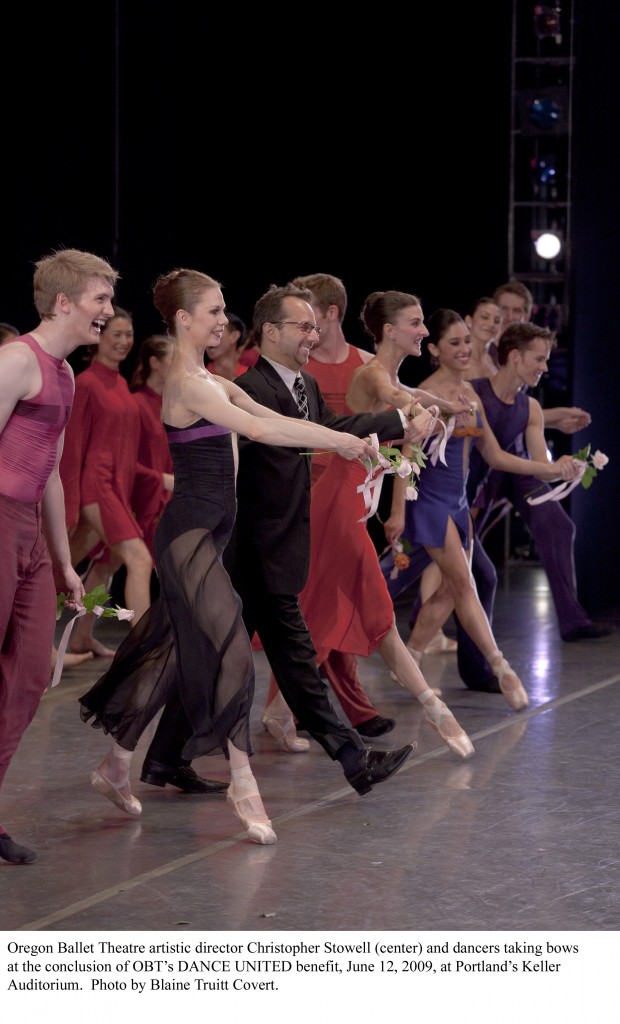
 THE LATEST NEWS FROM OREGON BALLET THEATRE, which is struggling with a life-threatening deficit that has it feverishly trying to raise $750,000 by June 30 to keep from going out of business: The campaign hit the $524,000 mark by Wednesday. That morning OBT’s Erik Jones said 900 tickets were still available for Friday night’s gala benefit performance Dance United, which will bring star performers from across North America to raise money for OBT. Buy your tickets
THE LATEST NEWS FROM OREGON BALLET THEATRE, which is struggling with a life-threatening deficit that has it feverishly trying to raise $750,000 by June 30 to keep from going out of business: The campaign hit the $524,000 mark by Wednesday. That morning OBT’s Erik Jones said 900 tickets were still available for Friday night’s gala benefit performance Dance United, which will bring star performers from across North America to raise money for OBT. Buy your tickets  OBT’s season-finale program was designed to accomplish several goals, one of which was to challenge the dancers. And there is no getting around the fact that the work those dancers had performed most often — Rush, Afternoon of a Faun and The Concert — was polished to the accomplished shine you see only in major companies: New York City Ballet, San Francisco Ballet, Pacific Northwest Ballet, Houston Ballet and the like. These are troupes with far bigger budgets, many more dancers and far more opportunities to perform than OBT.
OBT’s season-finale program was designed to accomplish several goals, one of which was to challenge the dancers. And there is no getting around the fact that the work those dancers had performed most often — Rush, Afternoon of a Faun and The Concert — was polished to the accomplished shine you see only in major companies: New York City Ballet, San Francisco Ballet, Pacific Northwest Ballet, Houston Ballet and the like. These are troupes with far bigger budgets, many more dancers and far more opportunities to perform than OBT.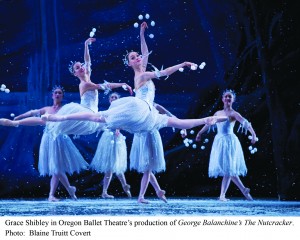 You’ve read
You’ve read 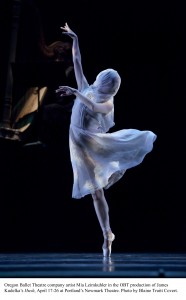 The bad doo-doo has just hit the fan. Art Scatter’s Barry Johnson, on his alternate-universe blog
The bad doo-doo has just hit the fan. Art Scatter’s Barry Johnson, on his alternate-universe blog 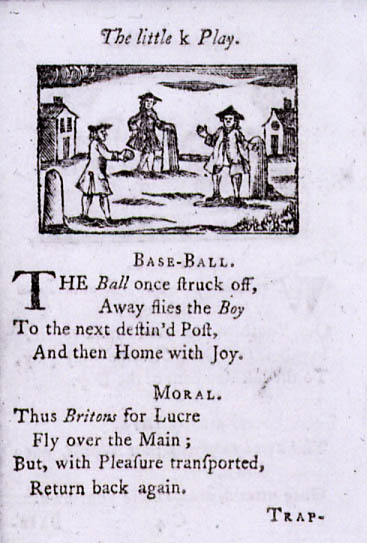 This morning’s Oregonian headlined the news that Mayor Sam Adams and his partners-in-sports have backtracked and won’t take the wrecking ball to Memorial Coliseum, after all.
This morning’s Oregonian headlined the news that Mayor Sam Adams and his partners-in-sports have backtracked and won’t take the wrecking ball to Memorial Coliseum, after all. Our partner-in-Scattering Barry Johnson (who does not look like the portrait here of Tom Paine, rabble-rousing author of the political tract Common Sense) advocates a little citywide common sense in the continuing flap over Portland’s Rose Quarter and Mayor Sam Adams’ push to tear down Memorial Coliseum to make room for a minor-league baseball park and a suburban-style “entertainment district” of aggressively anonymous chain outfits on the order of a Hard Rock Cafe.
Our partner-in-Scattering Barry Johnson (who does not look like the portrait here of Tom Paine, rabble-rousing author of the political tract Common Sense) advocates a little citywide common sense in the continuing flap over Portland’s Rose Quarter and Mayor Sam Adams’ push to tear down Memorial Coliseum to make room for a minor-league baseball park and a suburban-style “entertainment district” of aggressively anonymous chain outfits on the order of a Hard Rock Cafe.
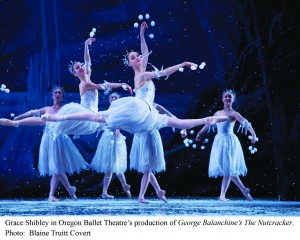 The news today isn’t good, and it isn’t unexpected:
The news today isn’t good, and it isn’t unexpected:  On a lighter note, a trip to North Portland for a puppet show got me thinking about the great ecdysiast Gypsy Rose Lee, she of the most celebrated stage mom in show business. (That would be Momma Rose, in the musical Gypsy.) You can see the results of my puppet adventures, as related in Monday’s Oregonian,
On a lighter note, a trip to North Portland for a puppet show got me thinking about the great ecdysiast Gypsy Rose Lee, she of the most celebrated stage mom in show business. (That would be Momma Rose, in the musical Gypsy.) You can see the results of my puppet adventures, as related in Monday’s Oregonian,  I come home from a few days in the rainylands to the north to discover that it’s been pouring in Portland — not just rain, but bad news.
I come home from a few days in the rainylands to the north to discover that it’s been pouring in Portland — not just rain, but bad news.